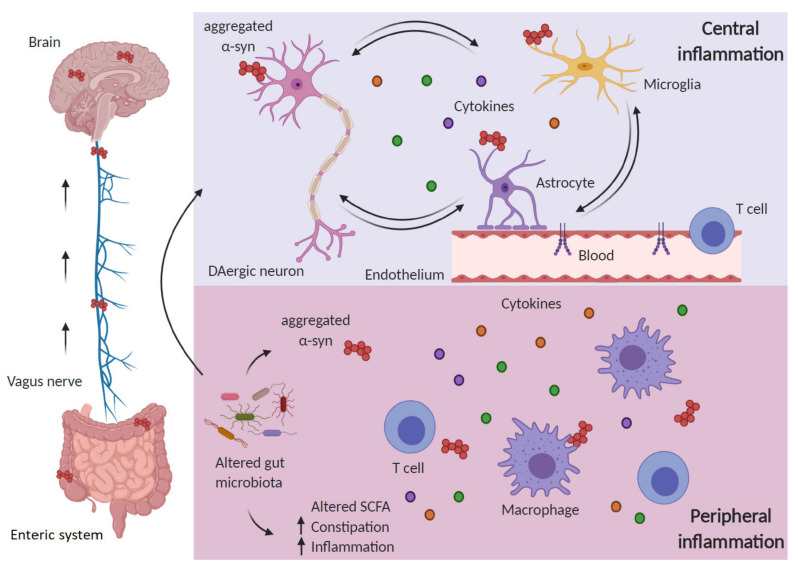Figure 2.
Inflammation in Parkinson’s disease (PD) encompasses central and peripheral inflammation. The “gut–brain axis” hypothesis in PD holds that alterations in the gut microbiota may favor α-Syn aggregation and are responsible for an inflammatory response in the periphery, which includes increased cytokine levels and activated T cells. Aggregated α-Syn is suggested to spread from the periphery to the brain through the vagus nerve in a prion-like manner. Once in the brain, proteinopathy together with other triggering factors (mitochondrial impairment, ROS, etc.) will sustain central inflammation in a vicious circle between dying dopaminergic neurons, glial cells and activated endothelium, further aggravated by infiltrating peripheral immune cells.

